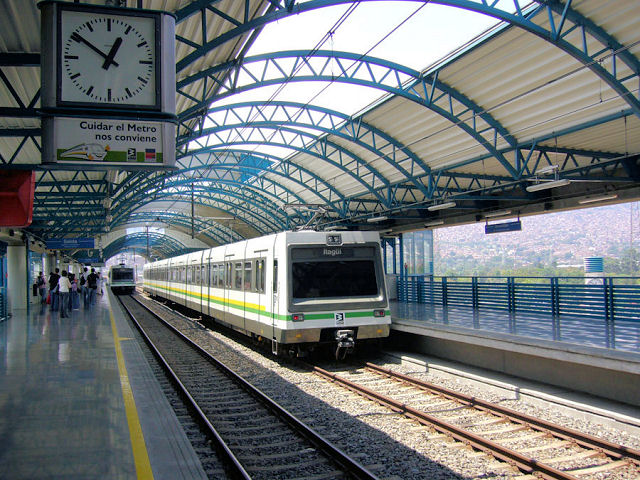
|
Medellín: Rail Rapid Transit (Metro) Overview
This summary provides key data details regarding the Metro (rail rapid transit) system in Medellín, Colombia – at present, the only rail transit system serving any Colombian city. ...
More...
|

|
US Rail Transit Excels in Safety
Recent US data continue to confirm that public transit – particularly light rail and other forms of rail transit – is an extremely safe way to travel
compared with private motor vehicles on streets, freeways, and highways ... and certainly, by far the safest way to travel in urban areas....
More...
|
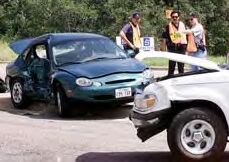
|
Reality Check: The REAL Transportation Safety Problem
In a concerted campaign to "Stop Light Rail at Any Cost", Road Warriors and obsessive monorail zealots have been publicizing
every light rail mishap they can find. But this sampling of news items should set the record straight as to where the real transportation safety problem actually lies.
More...
|
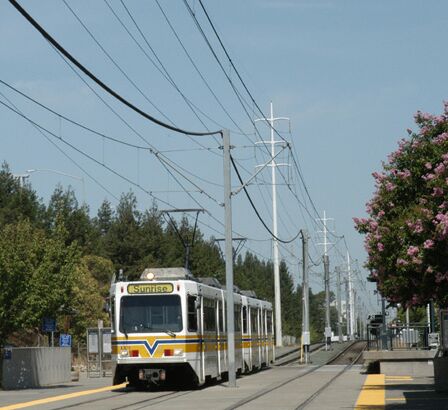
|
Electrification 101
Transport Energy Debate:
How Many BTUs on the Head of a Pin? ...er...Power Line?
In what might be called the "Battle of the BTUs", opponents of electrified public
transportation have seized on a new figure for assessing the energy content of production and distribution of electric power to launch a campaign to disparage the energy efficiency of electric transit.
But when the equivalent production and distribution efficiency of motor fuels is
taken into account, comparative analyses still place electric rail well ahead – especially in terms of carbon-emissions energy...
More...
|
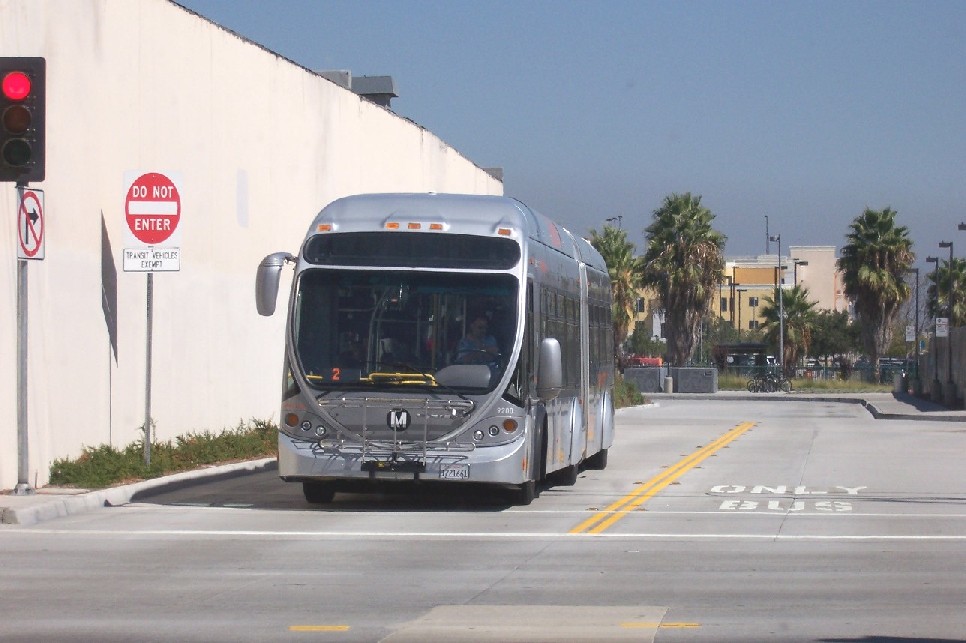
|
Busting "BRT" Mythology
LA's "Orange Line" Busway – "Just Like Rail, But Cheaper?" A Photo-Report Reality Check
Promoters of "Bus Rapid Transit" ("BRT") have been promulgating the claim that this mode of bus deployment is "just like rail transit, but cheaper".
But how does Los Angeles's new "Orange Line" actually measure up in comparison to light rail and other rail systems?
As usual, "a photo is worth a thousand words" ... so selected photos may help to illustrate the "Orange Line" facility and pertinent issues associated with it...
More...
|
|
|
Randal O'Toole's "Thoreau Institute":
Oil, Asphalt, and Pipeline Money Feed an Extremist Attack on Urban Planning and Public Transit
Who's funding Randal O'Toole's Thoreau Institute and his ferocious jihad against urban planning, Smart Growth, New Urbanism, public transport, and rail transit?
Research reveals that the Thoreau institute's efforts to roadblock the development of rail transit and Smart Growth policies are directly linked to powerful, extremely wealthy interest groups profiting from industries such as oil, asphalt, and pipelines.
More...
|
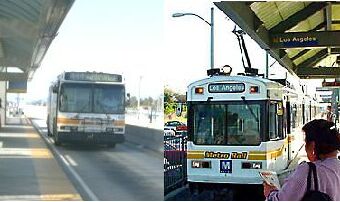
|
Busting "BRT" Mythology
Rail Transit vs. "Bus Rapid Transit": Comparative Success and Potential in Attracting Ridership
Despite claims that "there is no evident preference for rail travel over bus", and a
federal campaign to promote "BRT", evidence overwhelmingly suggests that rail transit modes significantly outperform "BRT" buses in attracting ridership.
More...
|
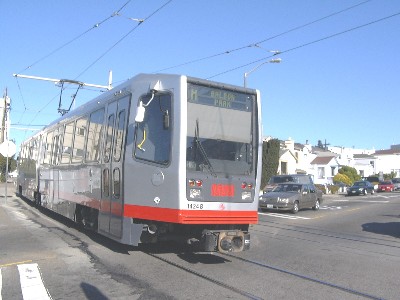
|
Busting "BRT" Mythology
Reality Check: Breakthrough Technologies Institute's Dubious Claims on "Bus Rapid Transit", Electric Rail, and Global Warming
A recent paper from the national "BRT" advocacy group Breakthrough Technologies Institute claims that "bus rapid transit" ("BRT") buses will produce fewer carbon dioxide emissions than electric light rail transit (LRT).
However, says engineer Norman Rolfe in this analysis, BTI's methodology exaggerates the relative ridership of "BRT" vs. LRT, and makes invalid energy comparisons.
in reality, a system using electrically powered vehicles will produce less "greenhouse" gases than one using internal combustion engine vehicles.
More...
|
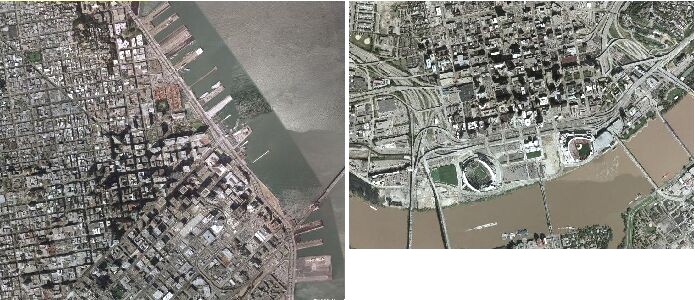
|
Photo-Essay – Rail vs. Highway-Focused Land Use: An Aerial Photo Tale of Two Cities
This contrast of aerial views of San Francisco vs. Cincinnati provides an opportunity for a rather striking visual comparison of a city with well-developed rail
transit and one that has depended on bus transit alone while emphasizing highway development.
More...
|
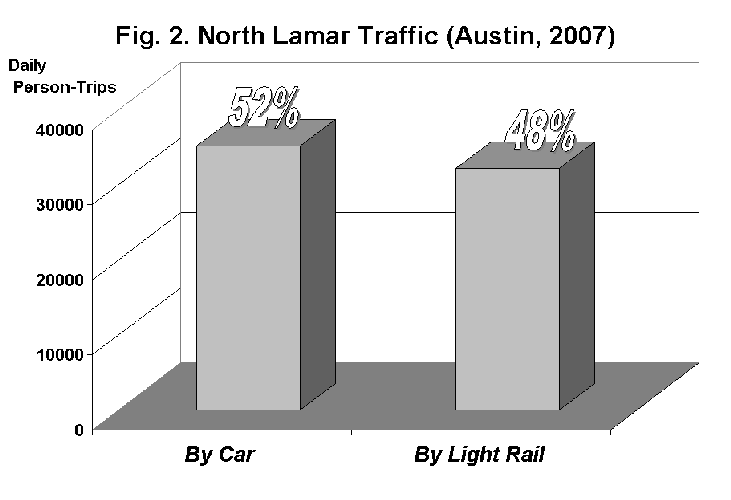
|
Projected Ridership for New Light Rail Starts: Issues of Accuracy and impact on Congestion
Contrary to the claims of rail critics, most forecasts of ridership for new LRT services are reasonably accurate, according to this paper presented at APTA's Rail Conference in 2001.
Moreover, say the authors, while the impact of new LRT services on total regional traffic in an urbanized area may be small, the impact in specific corridors served can be quite significant, especially during peak periods of travel.
More...
|
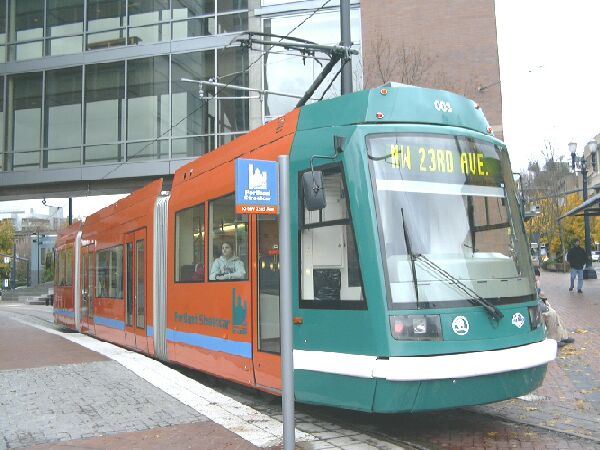
|
Your Campus – Does Light Rail Run Through It?
Light Rail Transit Access to North American Colleges and Universities
Rail transit, especially light rail, is ideally suited to provide high-quality and understandable connectivity between college and university campuses and their regional transit systems.
This analysis by Dave Dobbs provides examples illustrating how many major campuses across North America are connected by light rail to their respective cities' public transportation networks.
More...
|
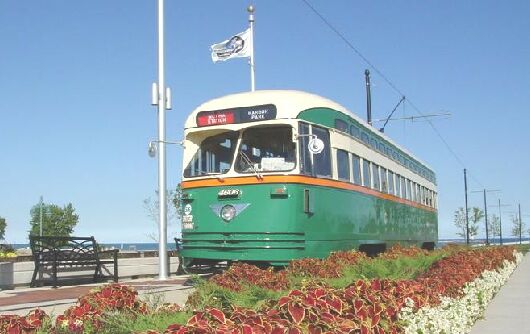
|
Kenosha, Wisconsin Streetcar System:
Workable Light Rail Meets Small-Town Mobility and Urban Development Needs
The apparent success of the new light rail streetcar system in Kenosha, Wisconsin, with a population of about 90,000, suggests that, even for small towns, quite attractive and workable
light rail systems can be installed with a minimalist design approach and strict cost containment.
More...
|
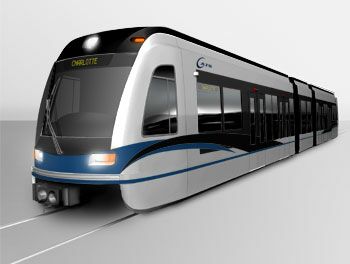
|
Charlotte Light Rail Transit Project: Key Facts
Summary data page with information on system features, ridership, critical averages, operations, vehicles, etc. for quick reference ...
More...
|
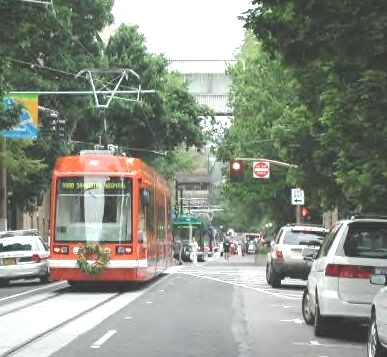
|
Portland Light Rail Streetcar: Key Facts
Summary data page with information on system features, ridership, critical averages, operations, vehicles, etc. for quick reference ...
More...
|
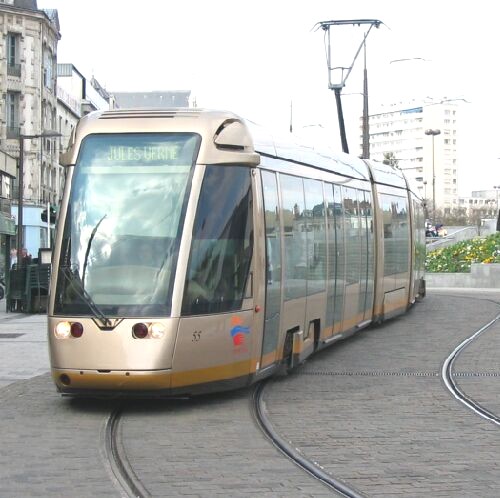
|
Orléans Light Rail Tramway: Key Facts
Summary data page with information on system features, ridership, critical averages, operations, vehicles, etc. for quick reference ...
More...
|
|
|
Rail Transit Continues to Lead in Ridership Growth Rate in USA, Canada
In this analysis and commentary, E. L. Tennyson reports that US and Canadian rail
transit continues to lead in the growth rate of its ridership – with light rail transit leading overall in ridership growth.
More...
|
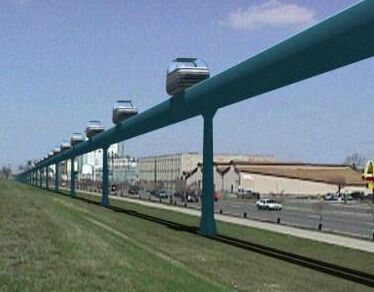
|
Personal Rapid Transit – Cyberspace Dream Keeps Colliding With Reality
Personal Rapid Transit seems to work perfectly in its promoters' computer simulations, but after more than 40 years of
development, still with no working, commercially viable, publicly accessible urban PRT installation, is it really an alternative to LRT?
More...
|

|
Las Vegas Monorail: Troublesome Technology in a Unique "Niche" Application
Is the Las Vegas monorail project a model for other North American cities, particularly in place of LRT?
It's important to understand the full ramifications of monorail technology, and the major tradeoffs that are involved in the decision to implement this unusual mode.
More...
|
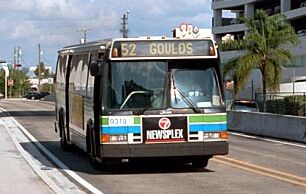
|
"Bus Rapid Transit" or "Quality Bus"? Reality Check
While improvements in basic bus transit services are direly needed in North American cities, what is actually meant by
"BRT"? The evidence suggests that "BRT" is not the "cheaper rapid transit" substitute for LRT claimed by promoters.
More...
|
|
|
Exposing Those Far-Right Propaganda "Think Tanks"
Throughout the USA, public transportation is under siege from propaganda mills
masquerading as so-called "think tanks", pouring out a steady stream of misinformation
and contracting national "hired guns" to oppose major transit projects. So, who are these outfits, and who bankrolls them?
More...
|
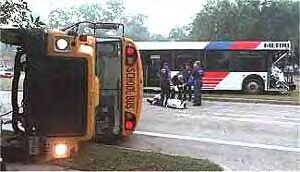
|
Transit Mode Safety: Rail Leads
An analysis of US DOT data shows that, with respect to total injury + fatality
accidents per passenger-mile over a 9-year period studied, in terms of the public's actual
potential exposure to an accident, rail transit, including LRT, is substantially safer than motor bus and AGT.
More...
|
|
|
Rail Transit Accounted for 84% of US Transit Passenger-Mile Growth, 1990-2000. Any Questions?
American Public Transportation Association data reveal that, between 1990-2000, total passenger-miles carried by US public
transit dramatically increased by nearly 16%, or over 6.5 billion passenger-miles. Of that growth, approximately 84% is accounted
for by America's rail transit systems – with light rail growing a startling 137%.
More...
|
|
|
Far-Right "Think Tanks" (Propaganda Mills) – Who Are Those Guys?
Among the most ferocious enemies of public transportation and
SmartGrowth planning are an array of far-right, so-called "think tanks" (propaganda mills) which provide platforms and
ammunition for opposition to major transit projects and a steady flow of cash for an assortment of "professional" anti-transit, pro-highway pundits. Governing Magazine sheds some rare light on these "Boys of Sprawl".
More...
|
|
|
Light Rail Leads All US Major Transit Modes in 2002 Growth
The latest news is in – and light rail transit is once again the USA's big winner in ridership growth among the major transit
modes, with an increase of 1.9 percent despite economic downturn, post-9/11 blues, and war preparations ... as E. L. Tennyson relates in this commentary.
More...
|
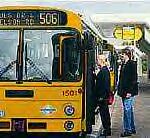
|
Bus "Transitways": A Triumph of Marketing – A Failure of Rigorous Analysis
Busways figure prominently in marketing efforts to promote
"BRT", with an apparent aim of convincing urban planners and decisionmakers that buses alone can solve their public transport
needs into the indefinite future. An editorial by Transit Australia responds to this contention.
More...
|
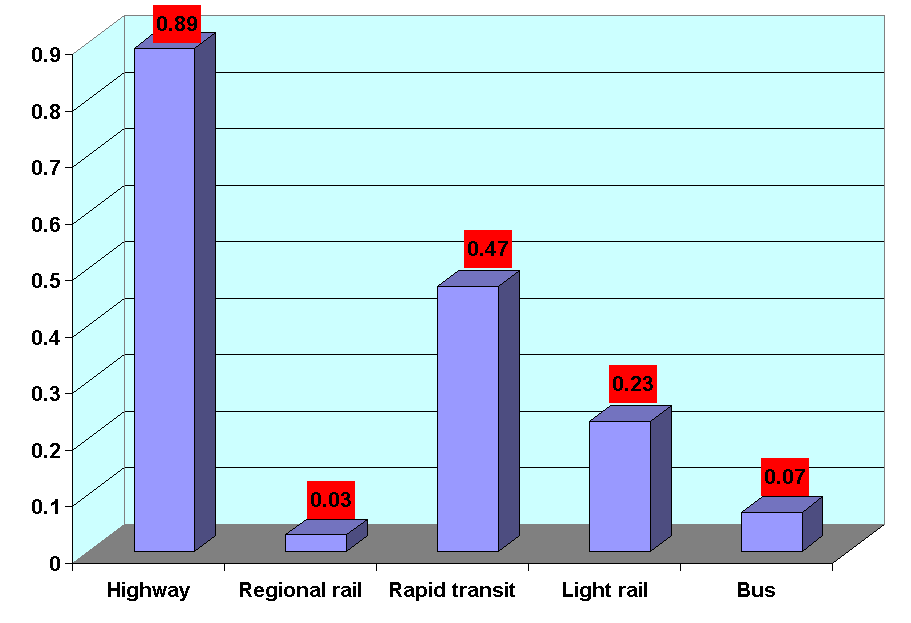
|
Fatality Rates: Transit Passengers vs. Motor Vehicle Occupants
Fatality rate statistics, calculated for transit passengers vs. motor vehicle occupants, indicate that urban public transit modes are a
significantly safer mode of travel than private motor vehicles for the people who are using them.
More...
|
|
|
Boston: Light Rail Transit Overview
Boston operates several important light rail transit lines within a
network of both light and "heavy" rail rapid transit and regional
"commuter" rail lines. Boston's LRT services currently carry the
heaviest LRT ridership in the USA, and in unit operating cost, are
significantly more cost-effective than bus services.
More...
|
|
|
Over 5 Million People Use America's Rail and Other "Guideway" Systems Daily
US rail transit and other "fixed guideway" systems carry more than
11 million rider-trips each weekday. That equates to approximately 5.2 million individual people, on average, about
equal to the entire population in a major metropolitan area such as Dallas-Ft. Worth, Detroit, or Boston.
More...
|
|
|
San Jose: Light Rail Transit Overview
Santa Clara Valley Transportation Authority currently operates a 30.5-mile light rail transit (LRT) line system extending from south
San Jose through downtown to the northern areas of San Jose, Santa Clara, Mountain View, and Sunnyvale. The LRT system has been increasingly cost-effective in its operations.
More...
|
|
|
Light Rail Use of Surface Streets and Arterials – On the Increase?
Total route-mileage and the amounts and proportions in streets
and arterials for the most modern-type LRT (light rail) systems in North America are presented. The data seem to suggest a trend
toward the greater use of these alignments as surface routes for LRT.
More...
|
|
|
How Light Rail Streetcars Increase Street Capacity
in this commentary, E. L. Tennyson explains how streetcars (or
other forms of light rail), although they may "get in the way" of
automobiles, vastly increase the capacity of the street to move
people – even when sharing the roadway lanes with mixed traffic.
More...
|
|
|
Dallas: DART Needs Fare Overhaul
As Dallas Area Rapid Transit (DART) faces severe financial
problems, the agency had better learn that mileage costs money.
Without mileage-based fares, the system will destroy itself financially.
More...
|
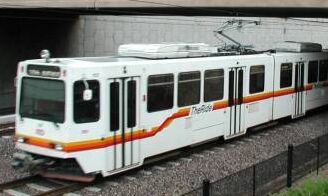
|
Denver Data Show Light Rail's Real Impact on Mobility Congestion
Denver's LRT at peak hour in the peak direction in the Santa Fe Drive corridor is carrying between 28% and 33% of the
total passenger traffic flow – apparently demonstrating that LRT can
make a substantial impact on corridor traffic congestion.
More...
|
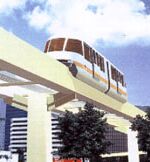
|
Transit Automation and Operating Cost – Where Are the Huge Savings?
Available evidence does not appear to
corroborate the contention that monorails, "PRT", or other
automated systems render phenomenal, or even significant,
operating cost savings compared with LRT. On the contrary, the
data suggest that fully automated systems may actually, in some
cases, incur higher operating costs
More...
|
|
|
More on Monorail Costs: Federal New Starts Data Show Surface LRT Has 1/3 Cost of Monorail
Capital cost data from the Federal Transit Administration for New
Starts projects strongly tend to corroborate previous data suggesting that monorail systems have roughly three times the
cost per mile of surface LRT systems.
More...
|
|
|
LA's Metro Rapid "BRT" – Just 13% From Automobiles?
Los Angeles's new Metro Rapid "Bus Rapid Transit" routes
represent an important service improvement for many passengers, and clearly total transit ridership in the corridor has
increased. But is Metro Rapid BRT service really an effective substitute for rail transit, as many BRT proponents claim? ...
More...
|
|
|
Monorails, Light Rail, and Automated vs. Non-Automated Transit Operation: Comparative Costs in Japan and USA
Automated transit operation is often touted as a "magic bullet" for
reducing transit operating costs by proponents and vendors of monorails and similar "gadget transit"
modes. However, a comparison of actual data from urban guideway-transit systems in the USA and Japan calls this into question.
More...
|

|
"BRT" - You Can Build It ... But Will They Come?
Is the ability of "BRT" ("Bus Rapid Transit") to attract riders equivalent to that of light rail? Recent experience
with new light rail vs. new "BRT" starts, an historical review, and other
evidence suggest that theory-based ridership forecasting models, approved by an
FTA promoting "BRT", may not tell planners, decisionmakers, and the public the whole story. More...
|
|
|
Japanese Monorail Fleet Sizes Suggest Most Systems Are Small-Scale
Monorail systems are occasionally proposed as an alternative to light rail transit (LRT). However, most monorail applications appear to be relatively small systems with few or no branches. In Japan, which seems to have the greatest concentration of urban monorails in the world, the relatively small size of these systems is suggested by their fleet sizes, which are quite small compared to North American LRT systems. More...
|
|
|
Federal GAO Report Shows: It's BRT (and Heavy Rail) With the Big Cost Overruns, Not Light Rail!
The US General Accounting Office's 1999 analysis of a number of major public transit projects – scrutinizing budget and schedule guidelines – shows that the budget record of light rail projects reviewed has been admirable. in contrast, the project with the greatest budget overrun was Boston's BRT busway project. More...
|
|
|
A Tale of Two Cities
Houston's bus system – especially its system of HOV lanes – is touted as a superior and less costly alternative to light rail. But in terms of transit passengers, Houston's HOV lane achievements have been far less spectacular than those in cities with light rail – such as Portland, whose MAX light rail system carries more than twice the daily transit ridership of Houston's HOV system on less than half the route-mileage. More...
|
|
|
Why Build a Light Rail Transit System?
Light rail transit attracts plenty of new riders, reduces transit cost, adds
transportation capacity, reduces pollution, strengthens downtowns, and is an
excellent investment. 10 reasons for building a light rail system. More...
|
|
|
How Light Rail Saves Operating Cost Dollars Compared With Buses
it's claimed that operating cost savings are a major advantage for light rail transit (LRT) and a major reason why this mode is such an attractive choice compared to various bus service alternatives. is it true? Readily available data from US operations – especially for relatively new systems – suggest that LRT does indeed tend to be much cheaper to operate than comparable bus service. Comparative figures from the Federal Transit Administration's 1998 database demonstrate this. More...
|
|
|
"Bus Rapid Transit" Analyses
A collection and index of a wide variety of analyses of "Bus Rapid Transit". More...
|
|
|
Monorail Analyses
A collection and index of analyses of monorail technology and systems. More...
|
|
|
Heritage Trolleys
A collection and index of our articles on heritage trolley systems. More...
|
|
|
Photo Gallery
A gallery of photographs illustrating various features and characteristics of light rail
transit and other transportation and general mobility issues.
More...
|
|
|
Los Angeles's Blue Line: Comparison of LRT vs. Bus
An analysis of Los Angeles's Blue Line light rail service
indicates that an alternative surface bus system would incur much higher operating costs
and would require hundreds of buses. More...
|
|
|
Study: Rail Transit May Slow Growth in Traffic Congestion
Opponents of rail transit argue that rail transit will
have negligible impact on traffic congestion.
But a data analysis indicates that, in large and very large urban areas,
urban areas with rail transit in major traffic corridors have a lower rate of congestion growth than do similarly sized
urban areas without rail. More...
|
|
|
Curitiba's "Bus Rapid Transit" Operation: A Critical Look Relative to Actual American Transit Experience
Columnist Neal Peirce has suggested that Curitiba's celebrated example of supposedly low-cost "buses-as-subways" could be duplicated in America.
Dave Dobbs examines the pitfalls of attempting to emulate the
Curitiba BRT example in a first-world country like the United
States. More...
|
|
|
Neal Peirce on Curitiba's "Bus Rapid Transit": Blind Naiveté Gets Taken for a (Bus) Ride
Despite being a consistently strong and persuasive voice for
the benefits of public transportation, columnist Neal Peirce,
in an encomium on behalf of the celebrated-showcase "Bus
Rapid Transit" system in Curitiba, Brazil, has left factuality,
reality, and common sense by the side of the road. More...
|
|
|
Light Rail Lowers Operating Costs
Light rail tends to be much cheaper to operate than comparable bus service. Transit operators and some federal officials are also impressed by the fact that, in many light rail systems, operating costs have actually been dropping. More...
|
|
|
Public Transit = Much Safer Travel
Public transit – particularly light rail – is by far one of the safest modes of
urban transportation, and much safer than the automobile.
More...
|
|
|
Cost per Passenger-Mile of an Urban Automobile
Calculations indicating the average fully allocated total cost (capital + operating) of urban automobile transportation in typical use for both work-commute and other purposes are provided in this report. More...
|

|
Wendell Cox, Reason Institute Blow "Impartiality" Cover
Wendell Cox and a gaggle of cohorts such as the Reason Public Policy Institute portray themselves as "independent", "scholarly" analysts, supposedly enlightening the public and policymakers as to the fatal
weaknesses of public transit and rail systems.
But critics contend that Cox and his ilk are nothing more than highly biased crusaders for
roadways and road-based transportation industrial interests, who distort facts through misrepresentation and cleverly selective manipulation of data.
Recently, Wendell Cox and the Reason Public Policy Institute have taken further actions which compromise their pretense at
"impartiality" and further damage their purported roles as "independent",
"impartial" researchers and consultants. More...
|
|
|
A Tale of Two Cities
Houston's bus system – especially its system of HOV lanes – is touted as a superior and less costly alternative to light rail. But in terms of transit passengers, Houston's HOV lane achievements have been far less spectacular than those in cities with light rail – such as Portland, whose MAX light rail system carries more than twice the daily transit ridership of Houston's HOV system on less than half the route-mileage. More...
|
|
|
Research Study: Riders Prefer Light Rail to "Bus Rapid Transit"
For fundamentally equivalent types of transit service, will light rail will attract more riders than "Bus Rapid Transit" (BRT)? A 1991 Philadelphia research project determined that LRT passengers find routes more understandable, the service more reliable, and the vehicles more spacious and comfortable, with less odors, fumes, and noise. The study also found that LRT tends to attract a greater proportion of nonwork trips, and that LRT riders are willing to walk further to access the service. More...
|
|
|
This lists all the various LRT systems currently in operation, starting with the USA and then Canada.
|
|
|
This lists all the various LRT systems currently planned, in the USA and Canada. |
|
|
Light rail transit (LRT) is experiencing intensive development and expansion worldwide. This activity is a testimonial to the fact that transportation planners, decisionmakers, and operators – in scores of cities across the globe – see LRT as a viable, cost-effective, and essential component of their urban transportation systems. More... |
|
|
Comparison Chart |
|
|
Comparison Chart |
|
|
Comparison Chart |
|
|
Comparison Chart |
|
|
Comparison Chart |
|
|
Comparison Chart |
|
|
Comparison Chart |
|
|
Comparison Chart |
|
|
Comparison Chart |
|
|
Comparison Chart |
|
|
Comparison Chart |